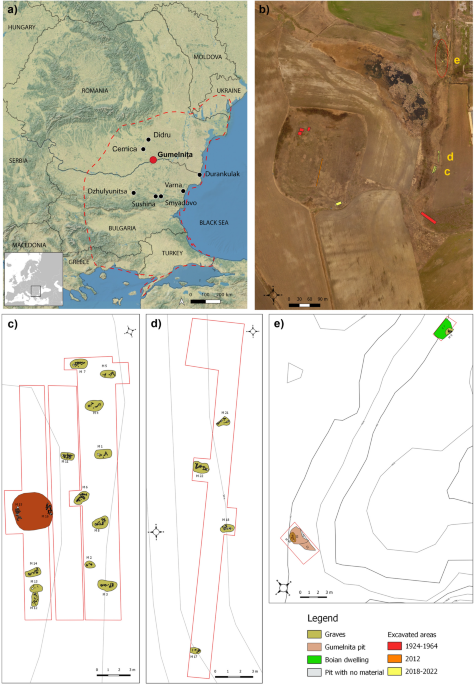Dogs may eat paper due to boredom or dietary deficiencies. Pica, the urge to eat non-food items, can also cause this behavior.
Exploring the peculiar habits of our canine companions reveals a range of reasons why they might munch on paper. Dogs are curious creatures with instinctual behaviors that sometimes lead to the ingestion of inedible objects, including paper. Boredom is a common trigger, as dogs often seek ways to alleviate the lack of stimulation.
Nutritional imbalances or deficiencies might encourage them to nibble on whatever they find, with paper being an easily accessible option. Pica, a condition where animals feel compelled to eat non-nutritive substances, could be another explanation. It’s essential for pet owners to understand these behaviors and their underlying causes to ensure the health and well-being of their furry friends. Monitoring your dog’s environment and diet, along with providing ample playtime and attention, can prevent unwanted paper-eating incidents.

Credit: www.springfieldlibrary.org
Curious Canine Behavior: Dogs Eating Paper
It’s not just a quirky habit – dogs often eat paper! This behavior can be puzzling to many pet owners. Understanding why our furry friends are drawn to munching on paper is important. It can sometimes lead to health concerns. Let’s explore what makes paper so appealing to dogs, and the potential risks it poses.
Uncovering The Appeal Of Paper To Dogs
Dogs love to chew, and paper is an easy target. The texture can be a delight for them. Some papers also carry enticing human scents. These scents catch a dog’s attention. Boredom or anxiety could also trigger this behavior. For puppies, chewing can help relieve teething discomfort. Here’s what might attract dogs to paper:
- Texture: Soft and easy to shred, paper can be fun to chew.
- Scents: Paper might hold smells that interest dogs.
- Boredom: Chewing paper can keep a bored dog busy.
- Anxiety relief: Chewing may help some dogs cope with stress.
- Teething aid: Puppies may use paper to soothe sore gums.
Health Implications Of Paper Ingestion
While paper itself isn’t toxic, eating it can be risky. It can lead to digestive issues. A small amount might not cause harm. Yet, large quantities can obstruct the intestines. Chemicals in some papers may also be harmful. It’s essential to keep an eye on your dog’s paper-eating habits. Look out for these potential health risks:
| Potential Issue | Description |
|---|---|
| Obstruction | Eating too much paper can block a dog’s digestive tract. |
| Toxins | Some papers contain harmful chemicals or inks. |
| Choking hazard | Small bits of paper could choke a small dog. |
| Digestive issues | Paper can upset a dog’s stomach or cause constipation. |
For any dog nibbling on paper, monitor their behavior closely. Consult a vet if it becomes frequent. Dogs deserve safe and healthy habits. Keeping them engaged with appropriate toys can prevent unwanted chewing. Plus, it ensures they stay away from potentially harmful materials such as paper.
Common Triggers For Paper Munching
Have you ever caught your furry friend eating paper? It’s a quirk that baffles many pet owners. Understanding why dogs eat paper means looking at the common triggers for this paper munching behavior. Let’s explore some reasons behind this unusual diet choice.
Boredom And Anxiety In Dogs
Dogs need mental stimulation and physical activity just like humans do. Without it, they turn into little mischief-makers. Bored or anxious dogs often pick up strange habits, including chewing on paper.
- Indicators of boredom include restlessness, constant pacing, and attention-seeking behavior.
- Signs of anxiety in dogs can be excessive barking, destructive behavior, and yes, eating non-food items like paper.
Providing more toys, daily walks, and training can address boredom and anxiety. Enough fun time keeps a dog’s mind engaged and mouth away from paper.
Nutritional Deficiencies And Hunger
When dogs don’t get the right balance of nutrients, they might resort to eating odd things. Paper might seem tasty to a dog that’s missing something in its diet.
| Nutritional Issue | Possible Signs |
|---|---|
| Low in Fiber | Seeking plant-based materials like paper |
| General Hunger | Eating anything in sight, including non-food items |
Ensure your dog has a well-balanced meal and consult a vet if odd eating habits like paper munching start. Sometimes a simple change in diet can stop paper cravings.
Differentiating Play From Compulsion
‘Differentiating Play from Compulsion’is crucial for any dog owner noticing their furry friend eating paper. Dogs exhibit various behaviors, some normal and others potentially problematic. Distinguishing between a playful act and a compulsive habit is key to ensuring your dog’s well-being. Understanding these behaviors can help prevent potential health issues and ensure your pet stays happy and healthy.
Recognizing Playful Chewing
Dogs often chew for fun. Playful chewing is a normal part of their behavior. Puppies especially chew to explore the world. Older dogs might chew to clean their teeth or stay engaged. Look out for these signs of playful chewing:
- Dog switches objects frequently
- No distress during chewing
- Chews in response to new toys or treats
A playful dog might grab paper, shred it, and then lose interest. This behavior usually happens in bursts of energy.
Signs Of Compulsive Behavior In Canines
Compulsive behavior, on the other hand, can be concerning. An outline of compulsive signs include:
- Chewing paper constantly
- Behavior disrupts daily activities
- Physical harm like mouth or stomach issues
If a dog can’t stop eating paper, it might need help. Repetitive actions not linked to play require attention.
| Behavior Type | Playful Chewing | Compulsive Behavior |
|---|---|---|
| Frequency | Occasional | Continuous |
| Context | During playtime | Any time, seems obsessive |
| Impact on Health | Typically harmless | Potentially harmful |
| Owner’s Response | Supervise and offer toys | Seek professional advice |
Distinguishing between the two can safeguard your dog’s health. When in doubt, a vet should always be consulted.
Preventive Measures For Pet Owners
Dogs eating paper can be worrisome for pet owners. Preventing this behavior involves understanding the underlying causes and adopting strategies to redirect their habits. Dogs may chew on paper due to boredom, anxiety, or just curiosity. It’s essential to monitor dogs to prevent the ingestion of harmful substances.
Enrichment Activities To Deter Paper Eating
Keeping dogs mentally stimulated is crucial. Enrichment activities keep their minds engaged and reduce mischievous behavior.
- Puzzle toys that reward with treats.
- Daily walks for physical exercise and stimulation.
- Interactive games like hide and seek with toys.
- Chew toys that satisfy the urge to gnaw.
Training Strategies To Stop Undesirable Behavior
Consistent training helps dogs understand household rules. Reward-based training is most effective.
- Teach commands like “leave it” to prevent paper grabbing.
- Use treats and praise to reward good behavior.
- Supervision is essential to correct behavior instantly.
When To Seek Professional Help
Your furry friend’s odd habit of eating paper could point to underlying issues. Keep an eye out for unusual behavior patterns. Persistent or compulsive paper eating is often a signal to seek expert advice. A pet’s health and wellbeing are paramount, so knowing when to get professional help is crucial.
Consulting A Veterinarian
Immediate vet consultation is necessary if your dog:
- Exhibits drastic changes in appetite or thirst.
- Shows signs of discomfort or distress.
- Has sudden weight loss or gain.
- Vomits frequently after eating paper.
- Passes unusual stools, possibly with paper bits.
A thorough check can rule out medical concerns. Tests might be essential. Vet expertise ensures prompt and appropriate treatment.
Behavioral Therapy With A Professional
Continued paper eating could signal behavioral issues. Professional help is a smart choice here. A certified animal behaviorist can identify triggers and suggest solutions. Effective strategies might include:
| Strategy | Benefit |
|---|---|
| Environmental Enrichment | Engage your dog’s mind and reduce boredom |
| Positive Reinforcement | Encourage desirable behaviors subtly |
| Obedience Training | Establish commands to prevent paper eating |
Consistent support and tailored programs lead to positive changes over time.

Credit: www.amazon.com
Exploring The Role Of Taste And Texture
If you’ve ever caught your canine friend munching on paper, you’re not alone. Dogs often eat non-food items, including paper, due to various reasons related to the taste and texture of these materials. Let’s delve into why this seemingly odd behavior is appealing to dogs through the lens of their sensory experience.
Sensory Stimulation In Dogs
Dogs rely heavily on their senses to explore the world. The texture of paper might offer a unique experience for their mouths. Soft, but with a slight resistance, chewing paper can be both entertaining and satisfying to dogs, especially puppies and younger dogs who have natural urges to chew. It’s not just about the texture, though.
- Paper can retain scents from foods or human touch.
- Chewing actions can be a way to alleviate boredom or stress.
- Dogs might be attracted to the subtle flavors of inks or residues on the paper.
Paper Products And Their Hidden Attractants
It’s puzzling to think of paper as tasty, but paper products can harbor attractants to a dog’s keen senses. From oily fingerprints to food residue and scented inks, these hidden elements may pique a dog’s curiosity. Below is a tabular representation of common paper products and possible attractants:
| Type of Paper | Possible Attractants |
|---|---|
| Mail & Envelopes | Glues, Inks, Human Scents |
| Napkins & Towels | Food Residues, Oils |
| Books & Magazines | Printed Inks, Binding Adhesives |
| Cardboard | Packaging Tapes, Printed Labels |
Understanding the sensory world of dogs helps in recognizing the allure of paper. By securing paper products and providing suitable chew toys, owners can both prevent unwanted behavior and cater to their dog’s need for sensory exploration.

Credit: www.nature.com
Frequently Asked Questions Of Why Dog Eat Paper
Why Do Dogs Chew On Paper?
Dogs often chew on paper out of boredom or curiosity. It can also be an instinctual behavior for teething puppies. Providing appropriate chew toys can help deter this habit.
Is Eating Paper Harmful For Dogs?
Ingesting paper can lead to digestive issues in dogs, such as blockages. While small amounts might pass without harm, larger quantities or frequent ingestion should be avoided. Always monitor your dog’s behavior and seek veterinary advice if necessary.
What Should I Do If My Dog Eats Paper?
If your dog eats paper, remove any remaining paper products to prevent further consumption. Observe your dog for any signs of distress or digestive upset. If there are any concerns, consult your veterinarian promptly.
Can Paper Eating Be A Sign Of A Disorder?
Yes, compulsive chewing or eating non-food items like paper can signify a condition called pica. Pica can stem from nutritional deficiencies, psychological factors, or underlying medical issues. A veterinary evaluation is recommended.
Conclusion
Understanding your dog’s paper-eating habit can be perplexing. It’s often a sign of boredom, attention-seeking, or even a dietary deficiency. Always monitor your pet’s behaviors, and if paper munching becomes frequent, consult a vet for advice. Keeping your dog healthy and engaged is key to curbing this unusual appetite.
